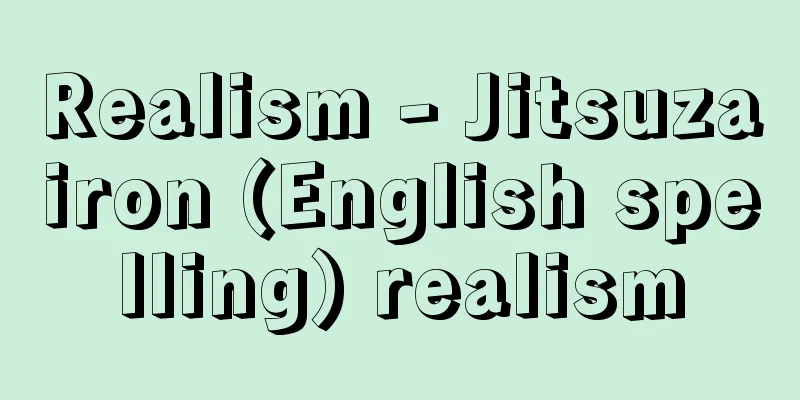Unity of religion and politics

|
Matsuri means ritual and Sei means politics, and refers to a state in which rituals and politics are undifferentiated and unified. It is supported by an institution in which the person presiding over the ritual is also the holder of political power, and by an ideal that considers this to be desirable. The unity of ritual and politics includes all governing systems governed by sacred values, and was most evident in ancient times, but its ideals and traces continue to live on to the present day. The system of the unity of the priests and the government was common in ancient civilizations. For the Egyptians of the Old Kingdom (3rd millennium BC), the king was sacred and the center of the sacred and immovable world order. The king was not merely a god-like being, but was believed to be the son of the sun god Ra and to be a god himself. In Mesopotamia, the Sumerian king was considered to be the son of the chief god Enlil (the earth god) and worshipped as a god. In ancient China, too, as shown by the layout of the buildings at the Yin Ruins and the oracle bone inscriptions, the performance of heavenly rituals was considered the most important duty of the emperor. In ancient societies, shamans entrusted their own judgments regarding natural phenomena that had a significant impact on agricultural results to divine oracles, making them the will of the group, and they themselves became political leaders. A tendency towards the unity of theocracy and politics can also be seen in ancient Greek and Roman society. In ancient Greece, not only kings but all citizens inherited authority and status based on their relationship with their paternal ancestors and the gods. In ancient Rome, emperor worship, said to have begun with the worship of Alexander, was practiced, and Julius Caesar was even called the god Jupiter. Eventually, Christianity was officially recognized under Emperor Constantine, and in the Byzantine Empire, caesar-papism was realized, in which the emperor also held the position of pope. In the early modern period, absolute monarchy became dominant, but Robert Filmer (1588?-1653) preached the divine right of kings, and established the absolute authority of the monarch in the name of God. He believed that the state was a family, and that obedience to the patriarch's authority was the key to political obligation. He said that Adam was the first king, and that Charles I was his legitimate son and would rule England. Since ancient times in Japan, the Emperor has been considered to be both the political sovereign and the highest religious authority. The Imperial System was originally based on the ideal of unity of religion and politics. The Japanese Emperor was not considered to be a representative of the gods, nor a king who had been granted rule by the gods, but a living god, and this was expressed through the Emperor's enthronement ceremony, or the Daijosai ceremony. As far back as the Suiko Chronicles in the Nihon Shoki, it is recorded that when the emperor began to rule the world, he first worshipped the gods together with his ministers. More recently, during the time of the overthrow of the shogunate and the restoration of the Meiji Restoration, the idea of national unity was sought in the restoration of the unity of religion and politics. The Meiji government adopted the teachings of ancient Shintoism on this basis, and in July 1869 (Meiji 2), it divided its organization into the Jingikan and the Dajokan, placing the former above the latter, and in the 1870s promoted the movement to proclaim the teachings of the Great Shinto. However, due to the convenience of relations with Western countries, the Meiji government enacted the Constitution of the Empire of Japan in 1889, which provided for religious freedom, and the old-fashioned policy of promoting the unity of religion and politics went into decline. On the other hand, Kato Hiroyuki, who tried to re-strengthen the tradition of unity of religion and politics under the guise of Westernization and modernization, tried to establish a theory of the Japanese national polity by giving a new appearance to the theory of the Emperor as a living deity by invoking Filmer's theory of the divine right of kings. This was joined by Motoda Nagazane's Confucian authoritarianism, and furthermore, Hozumi Yatsuka and Uesugi Shinkichi created an image of the Emperor as a pseudo-patriarch. From the end of the Meiji period through the Taisho period and into the early Showa period, the mystical Emperor worship of Kakehi Katsuhiko and others was forced on the entire nation through school education. After World War II, State Shinto was abolished by the "Shinto Directive," and freedom of religion and separation of religion and state were enshrined in the Japanese Constitution, eliminating the idea of religion and politics being united legally. However, even today, traces of this idea can be seen in memorial services for the war dead held by the government and visits to Yasukuni Shrine by public officials. [Miya Abe] [Reference] |Source: Shogakukan Encyclopedia Nipponica About Encyclopedia Nipponica Information | Legend |
|
祭は祭祀(さいし)、政は政治を表し、祭祀(まつり)と政治(まつりごと)が未分化で一致している状態をいう。それは、祭祀の主宰者が同時に政治権力の保持者であるような機構、およびそれが望ましいとする理念によって支えられている。祭政一致は、神聖な価値規範によって支配されるすべての統治制度を含むのであって、古代においてもっとも顕著にみられるが、その理念と痕跡(こんせき)は現代に至るまで生き続けている。 祭政一致制度は、古代の諸文明には一般的に存在していた。古王国時代(前三千年紀)のエジプト人にとっては、王は神聖であり、しかも神聖で不動の世界秩序の中心であった。王は、単に神のようなものではなく、太陽神ラーの子で、神であると信じられていた。メソポタミアにおいては、シュメール人の王は、主神エンリル(地神)の子だと観念され、神として崇拝されていた。古代中国においても、殷墟(いんきょ)の建造物配置や甲骨文字によって示されるように、天の祭祀の執行は、皇帝のもっとも重要な職務とされていた。古代社会においては、シャーマンが農耕の成果に重大な影響を及ぼす自然現象に関する自己の判断を神の託宣に託して集団の意志となし、自ら政治的な指導者になっていた。 古代ギリシア・ローマの社会にも祭政一致的な傾向が看取される。古代ギリシアでは、王ばかりでなく、すべての市民が父系の祖先と神々との関係を根拠として、権威と地位とを相続した。また古代ローマでは、アレクサンドロス礼拝に始まるといわれる皇帝崇拝が行われ、ユリウス・カエサルに至ってはユピテル神とよばれていた。やがてコンスタンティヌス皇帝のもとでキリスト教が公認され、ビザンティン帝国において皇帝が教皇の地位をも占める皇帝教皇主義が実現した。 近世に至って絶対王制が優勢となったが、ロバート・フィルマー(1588?―1653)は王権神授説を説き、君主の権威の絶対性を神の名のもとに権威づけた。彼は、国家は家族であり、家父長の権威に従うことこそ政治的な義務の鍵(かぎ)であると信じた。アダムが初めの王であって、チャールス1世はその嫡子としてイギリスを統治する者だとしたのである。 古来わが国においては、天皇は、政治上の主権者であると同時に、本来宗教上の最高権威者であるとされた。天皇制は、もともと祭政一致の理想を根底にもっていた。日本の天皇は、神の代理者でも、神から支配権を与えられた国王でもなく、現人神(あらひとがみ)であると観念され、このことは、天皇の即位式すなわち大嘗祭(だいじょうさい)の儀式によって表出されるというのである。 古くは『日本書紀』の「推古(すいこ)紀」に、天皇が世を治めるにあたって、まず群臣とともに神祇(じんぎ)を祭り賜ったと記されている。近くは倒幕維新のときにあたって、国民統合の理念が祭政一致の復古に求められた。明治政府は、こうした基底のうえに古学神道(しんとう)の教説を採用し、1869年(明治2)7月にはその機構を神祇官と太政官(だじょうかん)とに二分して、前者を後者の上位に位置づけ、1870年代には大教宣布の運動を推進した。 しかし明治政府は西洋諸国との交際上の都合もあって1889年に大日本帝国憲法を制定し、そのなかに信教の自由を定めたために、古めかしい祭政一致推進の政策は退潮した。他方、西欧化、近代化の装いのもとに祭政一致の伝統を再強化しようとした加藤弘之(ひろゆき)は、フィルマーの王権神授説を援用して天皇現人神説に新しい装いを与え、日本国体論を樹立しようとした。これに元田永孚(もとだながざね)の儒教的権威主義が加わり、さらに穂積八束(ほづみやつか)や上杉慎吉(しんきち)によって、擬似的家長としての天皇像がつくりあげられていった。明治末期から大正期を経て昭和前期にかけては、筧克彦(かけいかつひこ)などの神秘的な天皇崇拝主義が、学校教育を通じて国民全体に強制された。 第二次世界大戦後「神道指令」により国家神道が廃止され、日本国憲法に信教の自由と政教分離が明記されて、祭政一致は法制的には一掃された。しかしいまでも、政府による戦没者の慰霊行事、公職者の靖国(やすくに)参拝などに、祭政一致の痕跡が認められる。 [阿部美哉] [参照項目] |出典 小学館 日本大百科全書(ニッポニカ)日本大百科全書(ニッポニカ)について 情報 | 凡例 |
Recommend
Josephine Tey
1896‐1952 British female author. Her real name is ...
Chain Moss
A general term for mosses in the family Jubulaceae...
Lictores (English spelling)
In ancient Rome, magistrates with the power of com...
Cremation Urn Cemetery Culture - Cremation Urn Cemetery Culture
…The first half of the Early Iron Age in Europe, ...
Subscriber Line Signaling
...between the telephone and the exchange, signal...
Zou Rong; Tsou Jung
[Born] Guangxu 11 (1885) [Died] 1905.4.3. A Chines...
Keicho Nikkenroku - Record of Keicho Period
The diary of the noble and Confucian scholar Funah...
Ansei Tokai Earthquake
An earthquake that occurred off the coast of Tokai...
Butter - Butter (English spelling)
The fat in milk is separated and collected by phy...
Otakabe - Otakabe
…They were government officials and their duties ...
The Tale of Tsutsumi Chunagon
It consists of ten short stories written in the l...
Motor nerve fibers
…Some of this information reaches consciousness, ...
Emperor of Heaven - Koutenjoutei
The supreme god of the universe who appears in Con...
Oka Shuji - Kyuushuugeki
…Years of birth and death unknown. Also known as ...
Vertical light distribution - Let's go to school
...On a horizontal plane passing through the ligh...









